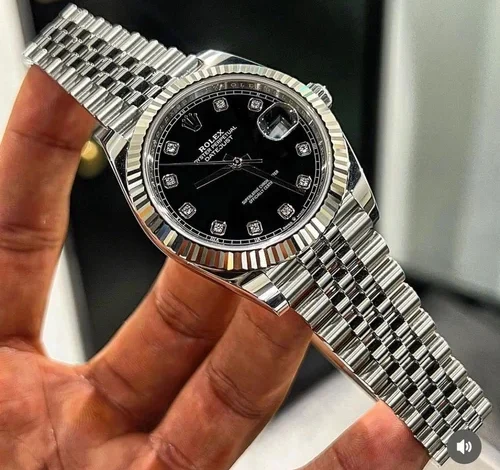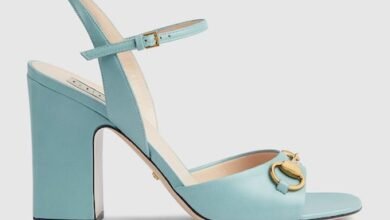The Timeless Appeal of a Rolex Watch: More Than Just a Luxury

The Timeless Appeal of a Rolex Watch: More Than Just a Luxury
Introduction: Why a Rolex Watch Still Reigns Supreme
When you think of luxury watches, Rolex is probably the first name that pops into your head—and for good reason. It’s not just a brand; it’s a global symbol of status, craftsmanship, and timeless style. Whether you’re into fine engineering, classic fashion, or just love collecting statement pieces, a Rolex watch checks all the boxes.
Rolex isn’t just about telling time. It’s about telling your story. For some, it’s a reward for achieving a major life milestone. For others, it’s a family heirloom passed down through generations. Whatever the reason, owning a Rolex isn’t about necessity—it’s about prestige, passion, and personal style.
But what exactly makes Rolex stand out in a sea of luxury watchmakers? From its unmatched precision to its rich heritage, let’s explore why Rolex continues to be a powerhouse in the world of horology.
The History Behind Rolex: A Legacy of Innovation
Rolex was founded in 1905 by Hans Wilsdorf and Alfred Davis in London, originally under the name “Wilsdorf and Davis.” By 1915, the company officially adopted the name Rolex. It wasn’t just a catchy name—it was short, easy to pronounce in many languages, and looked great on a watch face.
One of Rolex’s earliest contributions to the watch world was its focus on precision. In 1910, it became the first wristwatch to receive the Swiss Certificate of Chronometric Precision, an award typically reserved for marine chronometers. This early recognition set the stage for Rolex’s enduring obsession with timekeeping accuracy.
The brand has also been a pioneer in waterproofing. The iconic Rolex Oyster, launched in 1926, was the world’s first waterproof wristwatch. A year later, Mercedes Gleitze swam across the English Channel wearing one—and it kept perfect time throughout. That kind of real-world proof is something few brands can offer even today.
Over the years, Rolex continued to innovate. It introduced the first self-winding mechanism (the Perpetual rotor) in 1931 and the first wristwatch with an automatically changing date (Datejust) in 1945. These weren’t gimmicks—they were practical upgrades that changed the way people interacted with their watches.
Craftsmanship and Quality: Why Rolex Watches Last a Lifetime
Let’s be clear: Rolex watches are not mass-produced in the way most other consumer goods are. Each watch is crafted with care, precision, and a strong sense of pride. The company produces everything in-house—from movements to cases to bracelets. That level of vertical integration is rare, even in luxury circles.
The materials used in Rolex watches are top-tier. For example, Rolex has its own foundry where it creates 18k gold alloys. The company also developed its own steel alloy called Oystersteel, which is incredibly corrosion-resistant and looks stunning even after years of wear. It’s little touches like these that separate Rolex from the pack.
The manufacturing process is a blend of cutting-edge technology and human craftsmanship. Robots handle tasks like sorting and aligning parts with microscopic precision, but when it comes to assembly, inspection, and finishing, Rolex still relies heavily on skilled watchmakers. This balance ensures both consistency and artistry in every timepiece.
Durability is another hallmark. These watches aren’t just made to be worn—they’re made to be lived in. You can dive with them, climb mountains, or wear them daily without a second thought. A Rolex isn’t just an accessory; it’s a lifelong companion.
Popular Rolex Models and What They Represent
Rolex offers a wide variety of models, each with its own story and character. Whether you’re a sports enthusiast, a world traveler, or someone who appreciates classic elegance, there’s a Rolex for you.
Let’s start with the Rolex Submariner—arguably the most iconic dive watch in history. First introduced in 1953, it’s water-resistant up to 300 meters and features a rotatable bezel to track diving time. Over the years, it has become as much a fashion staple as a tool watch. Celebrities, adventurers, and everyday folks alike wear it with pride.
Then there’s the Rolex Daytona, a chronograph designed for racing drivers. It gained a cult following, especially after being seen on the wrist of Paul Newman. Today, vintage Daytonas are among the most sought-after watches in the world, fetching astronomical prices at auctions.
The Datejust is another favorite. Simple, elegant, and timeless, it’s a go-to for professionals and minimalists alike. Its clean design and automatic date feature make it a practical and stylish everyday watch.
Other notable models include the GMT-Master II for frequent flyers, the Explorer for adventurers, and the Day-Date (a.k.a. “The President”) for those who want the ultimate statement piece. Each of these models has a distinct identity, yet they all share the core Rolex DNA—precision, durability, and sophistication.
The Investment Value: More Than Just a Luxury Item
Let’s talk money—because when you’re spending thousands (or tens of thousands) on a watch, it’s more than just a purchase. A Rolex can be a legitimate investment.
Unlike most luxury goods, which depreciate the moment you walk out of the store, Rolex watches often retain or even increase in value over time. This is particularly true for limited-edition models or those with historical significance. Some Rolex owners have seen their timepieces appreciate several-fold over the years.
Even current models can maintain a strong resale value, thanks to Rolex’s reputation for quality and its tightly controlled supply. The brand is known for its slow production cycle, which makes demand outpace supply. That’s why certain models have long waiting lists or command premiums on the secondhand market.
Of course, not every Rolex will become a gold mine. But if you choose wisely, take care of it, and keep its original box and papers, you could be looking at a solid financial asset. And even if it doesn’t skyrocket in value, the emotional and symbolic worth of a Rolex can be priceless.
Rolex as a Status Symbol: More Than Meets the Eye
We’d be lying if we said Rolex didn’t have a certain reputation—it’s the go-to watch for those who want to make a statement. But that statement isn’t always about wealth or vanity. More often, it’s about hard work, achievement, and personal milestones.
Many people buy their first Rolex to celebrate a promotion, a big life event, or even as a gift to themselves after years of grinding. It’s a reminder that hard work pays off. It’s also an heirloom piece, meant to be passed on to the next generation with pride.
And let’s not forget the social signal. Wearing a Rolex can open doors. Whether in business meetings or social settings, it’s a silent communicator of taste, discipline, and success. While you should never judge someone by their wristwear, it’s undeniable that Rolex has a way of turning heads—and starting conversations.
Conclusion: Is a Rolex Watch Worth It?
So, is a Rolex watch really worth the hype? Honestly—yes. Whether you’re buying one for style, symbolism, or investment, it delivers on all fronts. It’s not just about owning a fancy watch; it’s about embracing a legacy of craftsmanship, precision, and timeless elegance.
From the boardroom to the beach, a Rolex can go anywhere and still look right at home. It’s an accessory, a tool, a trophy, and a piece of history all in one. Few other items carry that much weight—both literally and figuratively.
At the end of the day, a Rolex watch is more than just a timekeeper. It’s a personal journey on your wrist. And that, more than anything else, is what makes it truly priceless.Introduction: Why a Rolex Watch Still Reigns Supreme
When you think of luxury watches, Rolex is probably the first name that pops into your head—and for good reason. It’s not just a brand; it’s a global symbol of status, craftsmanship, and timeless style. Whether you’re into fine engineering, classic fashion, or just love collecting statement pieces, a Rolex watch checks all the boxes.
Rolex isn’t just about telling time. It’s about telling your story. For some, it’s a reward for achieving a major life milestone. For others, it’s a family heirloom passed down through generations. Whatever the reason, owning a Rolex isn’t about necessity—it’s about prestige, passion, and personal style.
But what exactly makes Rolex stand out in a sea of luxury watchmakers? From its unmatched precision to its rich heritage, let’s explore why Rolex continues to be a powerhouse in the world of horology.
The History Behind Rolex: A Legacy of Innovation
Rolex was founded in 1905 by Hans Wilsdorf and Alfred Davis in London, originally under the name “Wilsdorf and Davis.” By 1915, the company officially adopted the name Rolex. It wasn’t just a catchy name—it was short, easy to pronounce in many languages, and looked great on a watch face.
One of Rolex’s earliest contributions to the watch world was its focus on precision. In 1910, it became the first wristwatch to receive the Swiss Certificate of Chronometric Precision, an award typically reserved for marine chronometers. This early recognition set the stage for Rolex’s enduring obsession with timekeeping accuracy.
The brand has also been a pioneer in waterproofing. The iconic Rolex Oyster, launched in 1926, was the world’s first waterproof wristwatch. A year later, Mercedes Gleitze swam across the English Channel wearing one—and it kept perfect time throughout. That kind of real-world proof is something few brands can offer even today.
Over the years, Rolex continued to innovate. It introduced the first self-winding mechanism (the Perpetual rotor) in 1931 and the first wristwatch with an automatically changing date (Datejust) in 1945. These weren’t gimmicks—they were practical upgrades that changed the way people interacted with their watches.
Craftsmanship and Quality: Why Rolex Watches Last a Lifetime
Let’s be clear: Rolex watches are not mass-produced in the way most other consumer goods are. Each watch is crafted with care, precision, and a strong sense of pride. The company produces everything in-house—from movements to cases to bracelets. That level of vertical integration is rare, even in luxury circles.
The materials used in Rolex watches are top-tier. For example, Rolex has its own foundry where it creates 18k gold alloys. The company also developed its own steel alloy called Oystersteel, which is incredibly corrosion-resistant and looks stunning even after years of wear. It’s little touches like these that separate Rolex from the pack.
The manufacturing process is a blend of cutting-edge technology and human craftsmanship. Robots handle tasks like sorting and aligning parts with microscopic precision, but when it comes to assembly, inspection, and finishing, Rolex still relies heavily on skilled watchmakers. This balance ensures both consistency and artistry in every timepiece.
Durability is another hallmark. These watches aren’t just made to be worn—they’re made to be lived in. You can dive with them, climb mountains, or wear them daily without a second thought. A Rolex isn’t just an accessory; it’s a lifelong companion.
Popular Rolex Models and What They Represent
Rolex offers a wide variety of models, each with its own story and character. Whether you’re a sports enthusiast, a world traveler, or someone who appreciates classic elegance, there’s a Rolex for you.
Let’s start with the Rolex Submariner—arguably the most iconic dive watch in history. First introduced in 1953, it’s water-resistant up to 300 meters and features a rotatable bezel to track diving time. Over the years, it has become as much a fashion staple as a tool watch. Celebrities, adventurers, and everyday folks alike wear it with pride.
Then there’s the Rolex Daytona, a chronograph designed for racing drivers. It gained a cult following, especially after being seen on the wrist of Paul Newman. Today, vintage Daytonas are among the most sought-after watches in the world, fetching astronomical prices at auctions.
The Datejust is another favorite. Simple, elegant, and timeless, it’s a go-to for professionals and minimalists alike. Its clean design and automatic date feature make it a practical and stylish everyday watch.
Other notable models include the GMT-Master II for frequent flyers, the Explorer for adventurers, and the Day-Date (a.k.a. “The President”) for those who want the ultimate statement piece. Each of these models has a distinct identity, yet they all share the core Rolex DNA—precision, durability, and sophistication.
The Investment Value: More Than Just a Luxury Item
Let’s talk money—because when you’re spending thousands (or tens of thousands) on a watch, it’s more than just a purchase. A Rolex can be a legitimate investment.
Unlike most luxury goods, which depreciate the moment you walk out of the store, Rolex watches often retain or even increase in value over time. This is particularly true for limited-edition models or those with historical significance. Some Rolex owners have seen their timepieces appreciate several-fold over the years.
Even current models can maintain a strong resale value, thanks to Rolex’s reputation for quality and its tightly controlled supply. The brand is known for its slow production cycle, which makes demand outpace supply. That’s why certain models have long waiting lists or command premiums on the secondhand market.
Of course, not every Rolex will become a gold mine. But if you choose wisely, take care of it, and keep its original box and papers, you could be looking at a solid financial asset. And even if it doesn’t skyrocket in value, the emotional and symbolic worth of a Rolex can be priceless.
Rolex as a Status Symbol: More Than Meets the Eye
We’d be lying if we said Rolex didn’t have a certain reputation—it’s the go-to watch for those who want to make a statement. But that statement isn’t always about wealth or vanity. More often, it’s about hard work, achievement, and personal milestones.
Many people buy their first Rolex to celebrate a promotion, a big life event, or even as a gift to themselves after years of grinding. It’s a reminder that hard work pays off. It’s also an heirloom piece, meant to be passed on to the next generation with pride.
And let’s not forget the social signal. Wearing a Rolex can open doors. Whether in business meetings or social settings, it’s a silent communicator of taste, discipline, and success. While you should never judge someone by their wristwear, it’s undeniable that Rolex has a way of turning heads—and starting conversations.
Conclusion: Is a Rolex Watch Worth It?
So, is a Rolex watch really worth the hype? Honestly—yes. Whether you’re buying one for style, symbolism, or investment, it delivers on all fronts. It’s not just about owning a fancy watch; it’s about embracing a legacy of craftsmanship, precision, and timeless elegance.
From the boardroom to the beach, a Rolex can go anywhere and still look right at home. It’s an accessory, a tool, a trophy, and a piece of history all in one. Few other items carry that much weight—both literally and figuratively.
At the end of the day, a Rolex watch is more than just a timekeeper. It’s a personal journey on your wrist. And that, more than anything else, is what makes it truly priceless.



